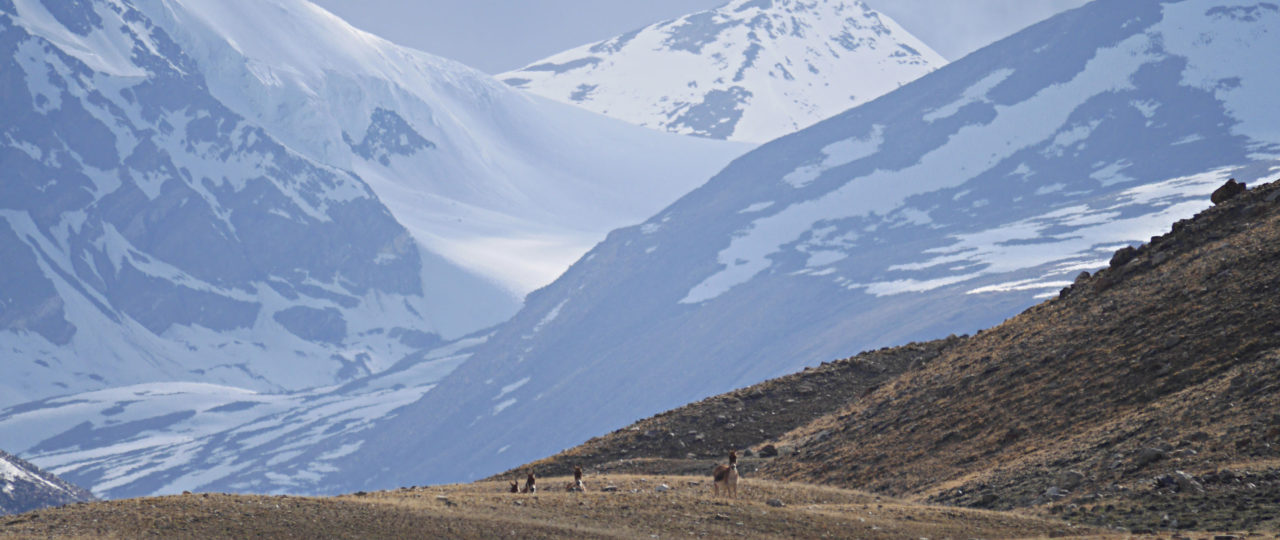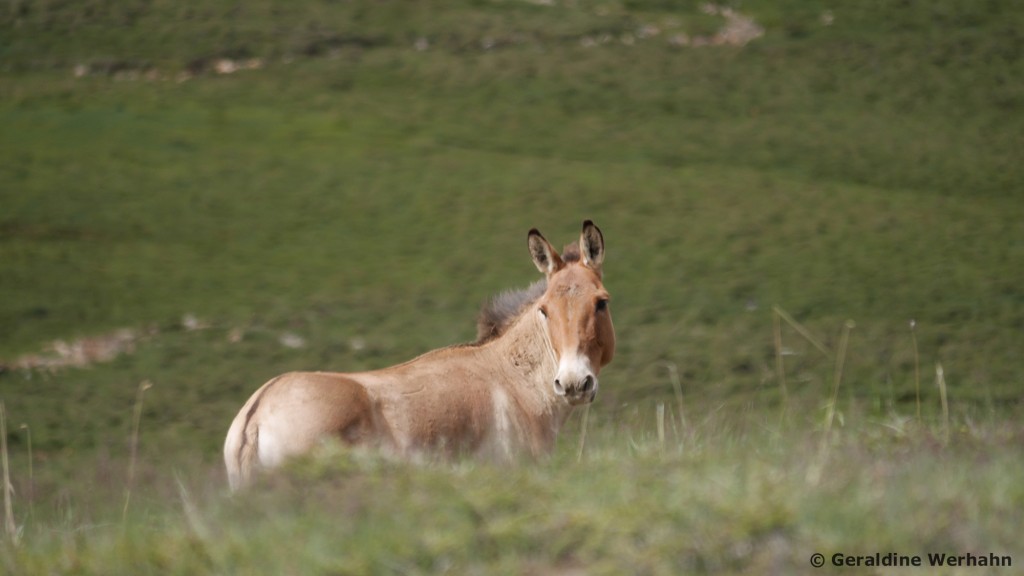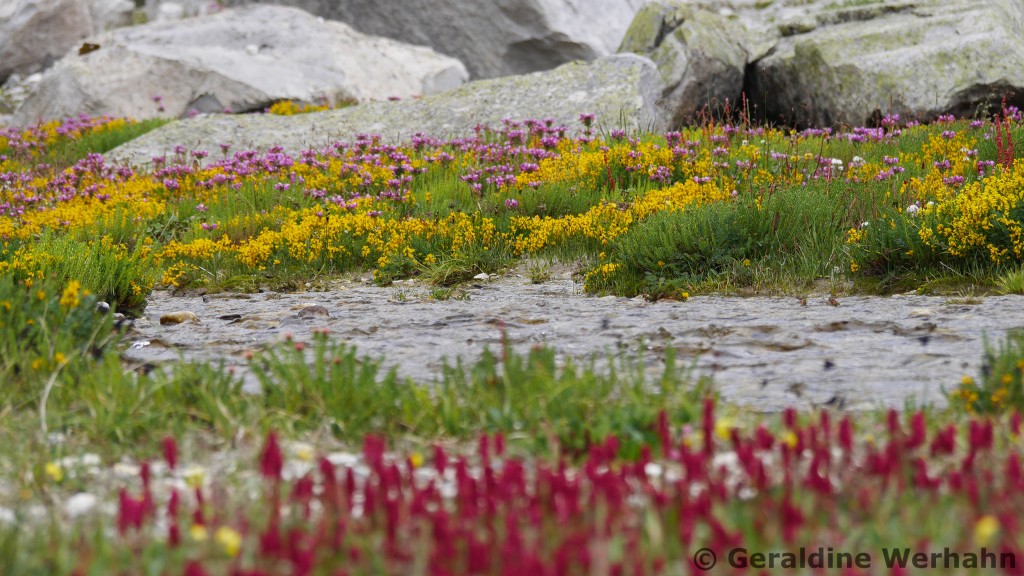Wolf Research Expedition to Humla western Nepal 2015
The first thing we noticed upon our return to the transhimalayan grasslands of upper Humla this season was that a lot less kiang Equus kiang were roaming the grasslands. We soon learned from our local friends of Limi valley that the past winter 2014/2015 was extraordinary severe. It had taken the lives of many wild ungulates as well as domestic livestock. The thick snow cover persisted for many month and made foraging extremely difficult for the animals in the plains. In the valley floors along the rivers, grasses and forbs were a bit easier accessible but avalanches where wiping out entire animal herds. Some kiang even came down to the villages where the people gave them food, but they nevertheless died. In summer 2014 we encountered six Tibetan gazelle Procapra picticaudata in the alpine grasslands, in summer 2015 it was two.
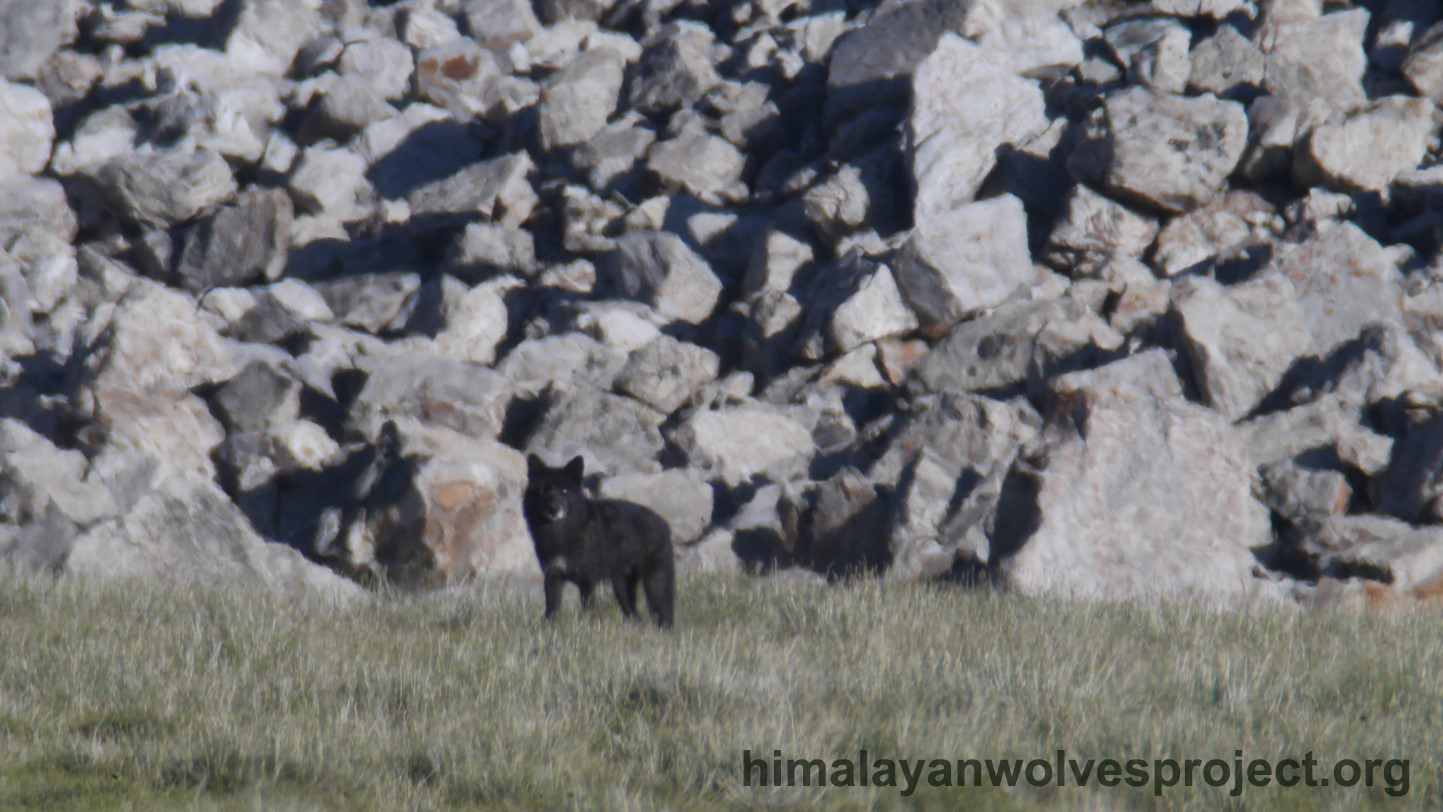
Black wolves Canis sp. do occur among the more frequent whitish individuals, as the black colour is determined by a gene allele.
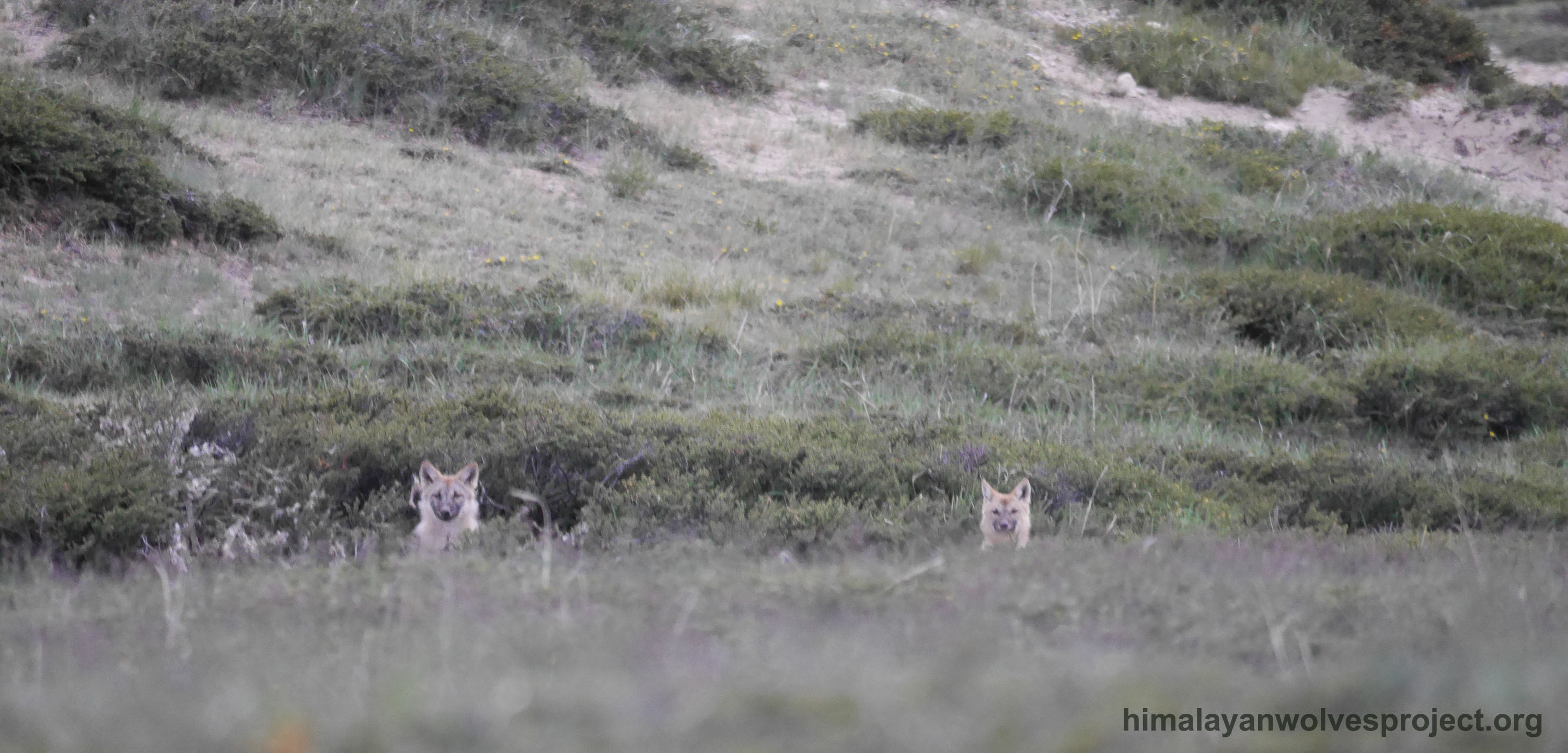
Wolf pups Canis sp carefully peaking towards me from the protective shrubs which they call home for now.
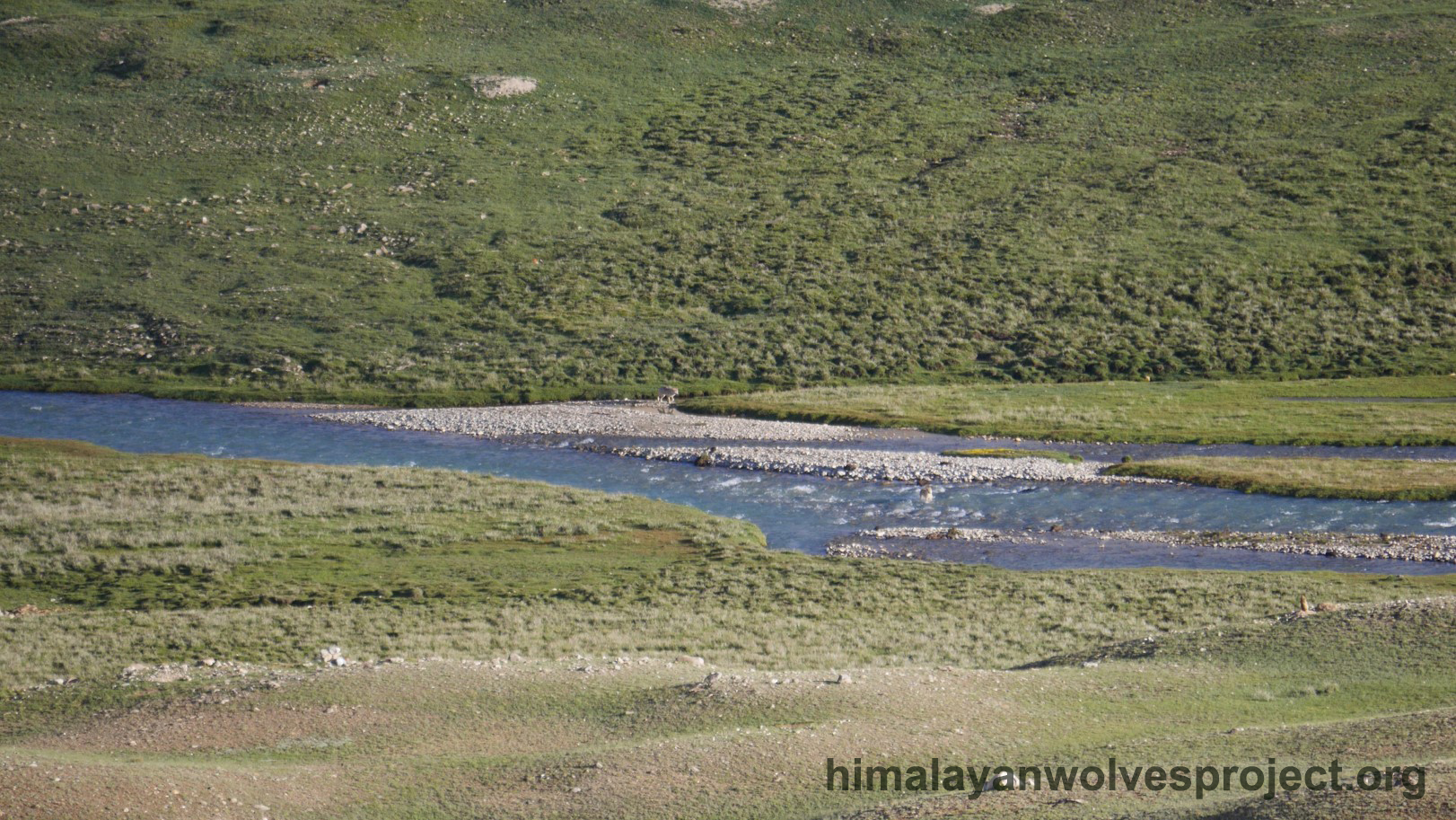
Two wolves crossing a larger river – not many geographical barriers can prevent wolves from passing.
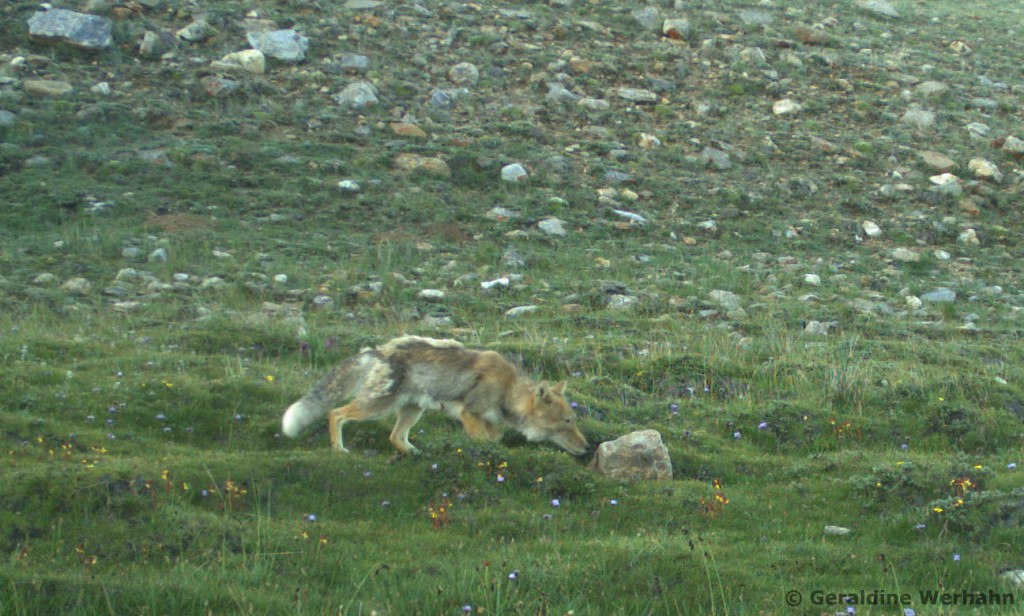
The Tibetan Fox Vulpes ferrilata inhabits the Tibetan Plateau along with two other canids, Wolves Canis sp. and Red Foxes Vulpes Vulpes.
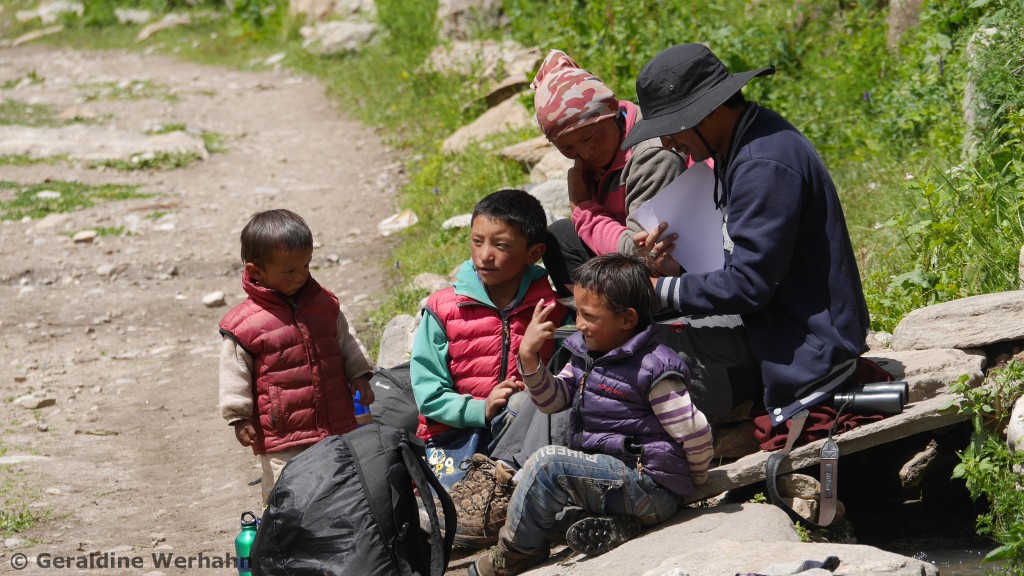
Investigating the local perception of wolves through social surveys and informal discussions here conducted by my research colleague Naresh Kusi.
Two young black wolves and a distribution update for the Tibetan fox
But there is also a lot of good things to report. Two young black wolves, most likely two of the three black pups seen last year, were playing around a fresh carcass of a blue sheep Pseudois nayaur. In another valley we discovered another wolf den site with at least three grey pups in the shrub lands. And for the second year in a row we could document the charismatic wild yak Bos mutus, and the elusive Tibetan fox Vulpes ferrilata. The Tibetan fox finding represents a western distribution update for the species in Nepal. And then there so many species of birds from beautiful delicate singing birds to large raptors circling the skies. A sighting of Tibetan Lark Melanocorypha maxima this year represents the first species record in Nepal. This adds just another support for the importance of protecting upper Humla. It is a distinct habitat not only for high altitude mammals of all sizes, but also for many resident and vagrant bird species.
Understanding human wildlife conflict
We also spoke a lot with local people. We expanded our social surveys with more respondents again this year and aimed to include a more balanced number of females. These surveys investigate the perception of predators by local people and explore favoured solutions to conservation conflicts with them. By understanding the situation we hope to be able to help wildlife conservation in the future. We departed with great respect for the people of Limi valley. Compared to people of many other places, they show a relatively respectful attitude towards the wildlife of their remote valleys, which seems rooted in their preserved ancient Tibetan culture.
